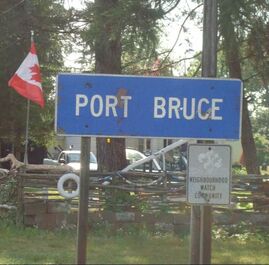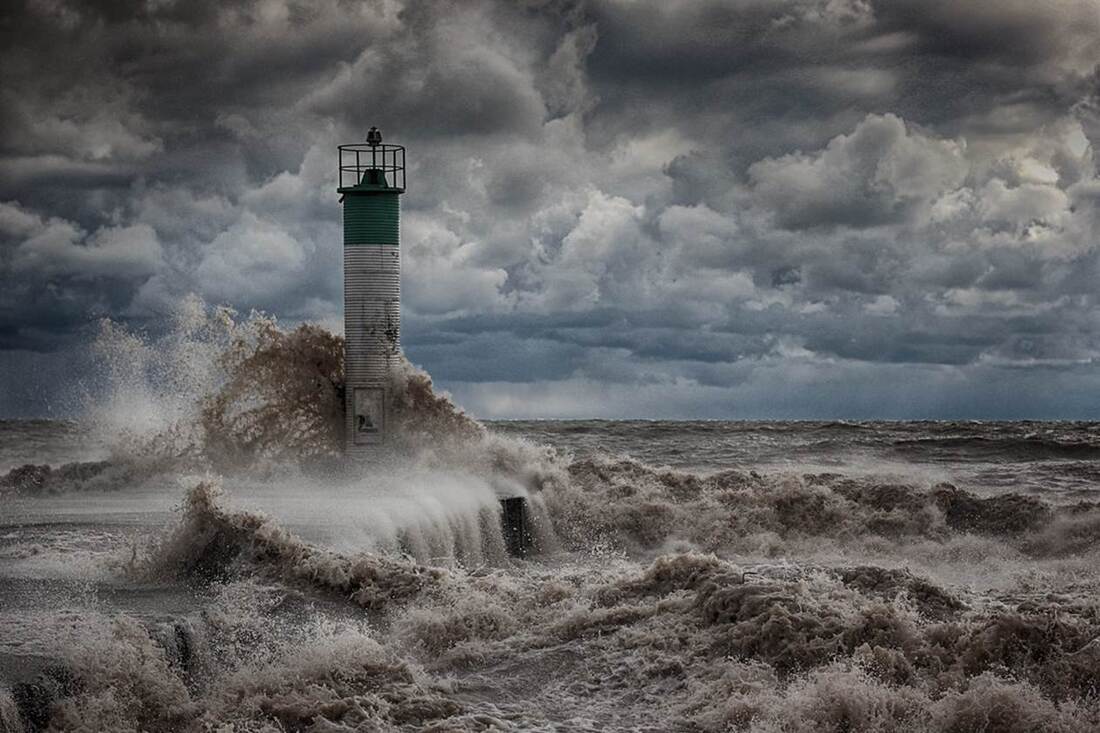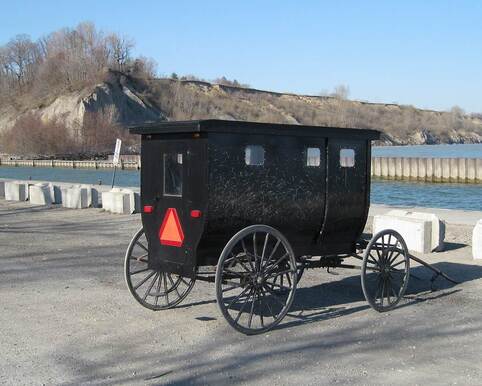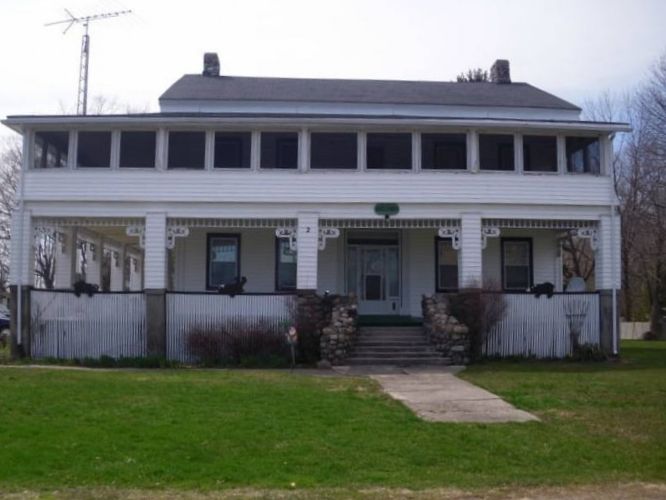 The grandkids are in town and to mark another summer’s apex, we dig into the tickle trunk for an essay from July of 1990 . . . . LONDON, ONTARIO – What is this strange allegiance I feel for Lake Erie? It’s one of those instinctive and perhaps inexplicable preferences – like dogs or cats, red or white wine, mittens or gloves – that seems to reveal something deeply significant about any Londoner when he’s forced to choose between a beach on Erie or Huron as his personal favourite. And perhaps I never chose the north shore of Erie so much as I was doomed to it. My parents practically lived at Port Stanley’s Stork Club through their courting years and I spent nearly all of my childhood summers staying down there at the cottage of family friends, then hitch-hiking down with packs of fellow galoots when I got a little older. Port Stanley was so laden with family lore, and was once so much a part of every Londoner’s life, that I was often compelled to turn away from its sad and lingering decline all through the ‘60s and ‘70s. I can still go down there for a day or two and not get too twisted around but if I stay any longer I know I’ll become quite uselessly remorse and angry about the fate of that once beautiful town. I’ve explored all the ports and beaches along that northern shore and as an adult I’ve staked a personal claim on what strikes me as the Erie-est beach of them all – Port Bruce. That town is mine. That lake is mine. I identify with it all. “Perhaps that’s because you’re dirty and shallow too,” sneered my brother Ted who chooses (ooh la la) Bayfield for his summer fiefdom whenever he can scratch together the exorbitant rent for one of its cottages. I didn’t bother refuting so unworthy a shot. He got his comeuppance last summer when beaches all up and down Huron were closed with dangerous pollution readings (from gull droppings, they said, but who believed that?) and every beach on Erie stayed open all season. So there. My lake’s cleaner than your lake and my gulls have better habits. In truth, I feel displaced up on Huron with its deep blue and clean (looking) water and Grand Bend’s magnificent sunsets which National Geographic rated as the second-loveliest in the world. (First place went to some unpronounceable beach on one of the Hawaiian islands.) When you can see Huron’s sand underneath all those baking acres of lotion-smeared flesh, it’s startlingly white. Prosperity is evident everywhere you look. T-shirt and sunglass vendors at the Bend, air-conditioned antique shoppes at Bayfield; they all seem to do well. You almost never find a pop machine whose lower panel has been kicked in. There’s a freshness and vitality; a kind of expensive perfection up there, that make me very nervous. But Erie – dear, dismal and neglected Erie – is as comfy to slip into as last year’s sneakers. Climactically, botanically, psychologically – it’s just another economically depressed ward of London. Everything you see down there needs fresh paint and isn’t going to get it. When a cottager screws a new yellow bug light into his naked front door socket, he’s pretty well completed his plans for sprucing the place up. The sand is grey and pebbly and littered with fascinating junk that’s been washed up on shore or fallen from the sky or left there by negligent humans. Tires and auto parts, dead fish and birds, ladies’ undies, kids’ shoes, and I even found a set of false teeth. One night we almost tripped over an artificial leg with sock and shoe affixed. I wanted to take it home but my wife suggested that its owner would likely notice his loss quite soon and come looking for it. “Do you think he’ll come on foot?” I asked. In the daylight, I wander the shore for hours, scooping and filling my pockets with hundreds of bits of water-smoothed glass. Pauper’s jewels, I call them, collecting and tracing the derivation of all the different colours. Clear bits buffed white come from cola, root beer and fruit-flavoured soda bottles; brown from old Canadian stub-necked beer bottles; green from new Canadian and American beer bottles and a whole range of pop bottles like 7-Up, Mountain Dew and Canada Dry ginger ale. Rarest and most precious and lovely of them all – blue – which comes mostly from old jars of Noxema. The sky over Erie never knocks your eyes out of commission with retina-melting oranges and crimsons but works quiet, watercolour wonders with blue and purple and pink. On days when a storm blows in off the lake, grey and deep blue clouds as restlessly vacillating as the waves, reform the dome of the world into gripping new patters with every passing minute. And the people attracted to Erie beaches seem quieter too. No grand parade of muscle-mobiles strutting up and down the main drag and honking at gorgeous babes. Just an occasional sighting of sensible and over-dressed families sitting on itchy plaid blankets and serving hot tea out of vacuum flasks. (“Thank you, Mummy.’) And only at Port Bruce have I ever happened upon the mesmerising spectacle of baptisms by full immersion. There was a gentle rain that day and thunder in the east that warned of sterner weather to come. And out in the lake, 20 fully-dressed parishioners were standing waist-deep in choppy water and waving their arms in the air as a sign of praise or distress at sea. Their minister proclaimed from a Bible held aloft in one hand and vigorously dunked new Christians with the other – plopping them down with a splayed hand on their heads like Wilt Chamberlain sinking an easy basket. Up on the shore, we couldn’t make out a word of what they were saying, but I could’ve watched that silent, mad and beautiful ritual for hours. This summer will be our tenth at Port Bruce. In 1980 and ’81, my wife and I rented a room at the 80 year-old Rocabore Inn; a sprawling two storey summer hotel made of stone and wood with a wraparound screened verandah on the second floor that looks out over the harbour. Our room cost ten bucks and we had the joint to ourselves except for one old gentleman with a nasty cough who spent an inordinate amount of time in the washroom just across the hall. My wife had watched Psycho a few months before and was apprehensive about taking a shower. And then we really scared ourselves silly by setting out for a late night tour of the premises. The enormous kitchen and dining room weren’t in service anymore and most of the furniture in the lobby, including an old grand piano, was obscured under white canvas sheets. Operations were clearly winding down at the Inn itself but out on the lawn, there were about a dozen trailers whose owners paid 20 bucks each for a patch of grass and access to power and water lines. For half as much money, we had enough space to host a bowling tournament, yet a dozen families chose to stay out there cramped together in their little tin huts on wheels. Go figure.
’81 was the last year that the Rocabore offered rooms for rent. We may even have been the last people on earth to partake of its slightly spooky charms. The hacker was gone that year so we brought along a little noisemaker of our own; our first-born who thumped away in her Jolly Jumper suspended in a hallway door. The Rocabore Inn still stands (though sagging in spots), totally ignored in the midst of a thriving trailer park. You could probably ruin your life trying to restore the old place and drum up the trade to support it but I really wish some masochistic philanthropist would take up the challenge. There isn’t another old inn quite like it on the northern shore. For the last eight years we’ve been staying in a waterfront cottage to the west of the main beach with various extended chapters of my wife’s family. Designed to sleep four in comfort, we usually manage to pack the place with twice that many children plus an assortment of parents, grandparents and friends. It would be intolerable if we thought about it so we don’t. Crying, shivery babies with five pounds of sand stuffed inside wet bathing suits. Dogs trying to revitalize their mangy coats by rolling in dead fish. Grumpy uncles and grandfathers who somehow think – in the midst of all this human chaos – that they’re entitled to quiet afternoon naps. My manic twin-in-law who invents new aquatic sports for everyone to play, then subtly changes the rules if it looks like he isn’t going to win. (“I don’t see how you can say that’s not fair when I made up the game in the first place.”) Cooking up impromptu dinners for twelve in pots with no handles and mismatched lids. And always, the nightly siege to push the blighters into bed. The big rally begins at 7:30 p.m. and is never finished before ten. The walls and floors are paper thin. If you rattle open a bag of potato chips at midnight, you wake up at least one groggy child who comes groping downstairs for dibs. Sometimes I lie awake at 2 a.m., distracted by a strange grinding noise which I’m sure is the sound of all those revved-up, sunburned children growing in their sleep. I know that when they hit adolescence, Port Bruce will lose its appeal. They’ll want a beach where something happens, where other kids hang out, where all the stores and concession stands don’t close up by 8 p.m., where there’s a bar or a beer store or some kind of club that books bands. I expect Port Bruce will lose them for a while and they may even think they’ve grown to prefer Lake Huron. But if they’ve been inculcated, like I was inculcated, then I know that they’ll be back. –This article was first printed in July, 1990
7 Comments
Barry Wells
29/7/2019 04:59:02 pm
My adolescent summers (1958-1970) were spent at my maternal grandparents' cottage at Turkey Point on Lake Erie, south of the Delhi and Simcoe area.
Reply
Kirtley
6/8/2019 10:09:50 am
Barry Wells in his comment on the Port Bruce article swerves into a criticism of Salim Mansur for not heeding the climate emergency.
Reply
Barry Wells
6/8/2019 11:21:11 am
It's my understanding that multiculturalism fear-monger Salim Mansur is more focused on Canada (and not Europe). If Islamic immigration to Canada is perceived by him as a significant threat, I don't see it.
Reply
Barry Wells
6/8/2019 11:30:31 am
This is the link from which my rebuttal excerpt is gleaned:
Reply
Sonny Drysdale
7/8/2019 11:48:14 am
Oh, Landsakes - it is truly a sad state of affairs when little Bobby Pegg has to come on and point out etiquette rules for 'How-to-comment on a post that's on the Information Highway' - Rule #1 - make your comments so that they appear on the specific blog-post that the subject is about;;... #2 Do not refer to previous comments from two or more posts ago. No one remembers. But if you have to quote one, make it brief ...And finally Rule #C - sometimes these engaged conversations/disagreements on The Internet between friends can end up being a 'pissing contest'. Always wash your hands afterwards. And remember - keep a happy thot.
Reply
Nancy Williams
28/1/2020 05:52:24 pm
I was going through my Grandmother's old photos and I came across one of the Rocabore Inn. It is probably from the 1950's. There were no notes. So I'm assuming they stayed there. Let me know if your interested in seeing them.
Reply
catharine spratley
18/12/2022 04:39:13 am
Hi Nancy
Reply
Your comment will be posted after it is approved.
Leave a Reply. |
HERMANEUTICS
If you would like to contribute to the ongoing operations of Hermaneutics, there are now a few options available.
ALL LIFE IS A GIFT :
THE IMPORTANCE OF TRADITION :
Archives
June 2024
Categories
|




 RSS Feed
RSS Feed